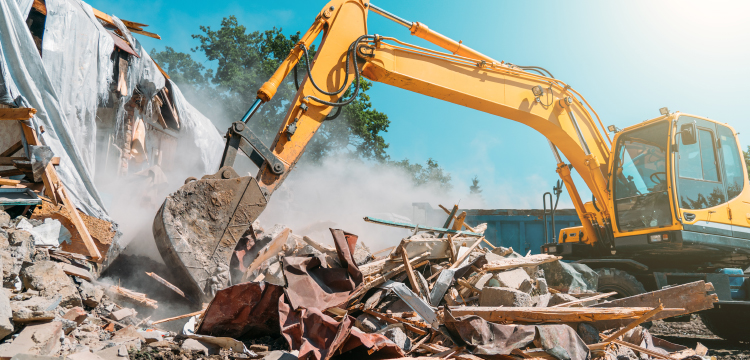Building from the Ground Up: The Crucial Role of Excavation in Construction
Excavation is a complex but crucial aspect of construction that ensures the safety, stability, and sustainability of any building project. It plays a critical role in the creation of robust and durable structures.
Following is a description of the various types of excavation and why this process is indispensable in the construction industry.
Understanding Excavation
Excavation refers to the process of moving earth, rock, or other materials with tools, equipment, or explosives. It includes earthwork, trenching, wall shafts, tunneling, and underground work. Excavation has multiple purposes, including exploring new sites, constructing buildings, and mining for precious resources. In construction, excavation forms the basis of building foundations, ensuring stability and longevity.
Types of Excavation
Excavation can be classified based on the material excavated or the purpose of the excavation.
Topsoil Excavation
Purpose: To remove the uppermost layer of soil, which contains vegetation and organic matter. This type is essential for preparing a clean and stable base for building foundations or other structures.
Earth Excavation
Purpose: To remove the layer of soil immediately beneath the topsoil. It’s crucial for laying the foundation and substructures of buildings, roads, and bridges.
Rock Excavation
Purpose: To remove rocky materials that cannot be excavated without the use of specialized tools and techniques like drilling or blasting. Rock excavation is essential in constructing tunnels, roads, and dams where the soil is not sufficient to bear the load.
Muck Excavation
Purpose: To remove a combination of water and soil, often creating a muck that must be removed to reach dry land. Common in swampy areas, this type ensures that the construction site is stable and dry.
Trench Excavation
Purpose: To create narrow, long trenches to lay down pipes, cables, or drainage systems. Critical for installing utilities such as water lines, sewer lines, and electrical conduits.
Cut and Fill Excavation
Purpose: To remove material from one area and use it to fill another, creating a level area suitable for construction. Used to create leveled surfaces for foundations and road beds, balancing out the terrain.
Why Excavation is Essential in Construction
Excavation is not merely about digging; it’s a highly strategic process that lays the groundwork for the entire construction project. Here are the key reasons why excavation is essential:
Foundation Preparation
A well-executed excavation process ensures that the foundation is set on stable and compact soil. This is crucial for preventing future settlement issues and structural failures.
Site Development
Excavation prepares the site for the installation of underground utilities like water, sewage, and electrical systems. It also helps in shaping the landscape and preparing it for further construction activities.
Risk Mitigation
Proper excavation helps in identifying and removing potential hazards such as unstable soil or rock, ensuring a safe and secure construction environment. It also helps in addressing drainage issues by creating appropriate channels.
Material Management
Excavation aids in managing and relocating soil and rock to appropriate areas, optimizing the use of on-site materials, and reducing the need for additional resources.
Structural Integrity
For any structure, the integrity and stability of its foundation are paramount. Excavation ensures that the subgrade is strong enough to support the weight of the building, thereby enhancing its durability and lifespan.
Environmental Impact
Careful excavation planning can minimize the environmental impact by ensuring that the natural habitat is preserved as much as possible. It also helps in managing water runoff and preventing soil erosion.
The synergy between excavation and the use of TMT bars is vital in construction. Excavation lays the groundwork, creating a stable base, while TMT bars provide the necessary reinforcement to handle load-bearing requirements and external pressures. This combination ensures that buildings are not only strong and resilient but also capable of enduring natural forces such as earthquakes and heavy winds. Shree TMT recognizes that the foundation of a great building is a result of meticulous planning and execution right from the excavation stage. Our commitment at Shree TMT is to provide the highest quality TMT bars that support and enhance the structures built on well-executed excavations. By understanding the various types of excavation and their importance, we can better appreciate the intricate processes involved in transforming a plot of land into a robust and resilient structure.

